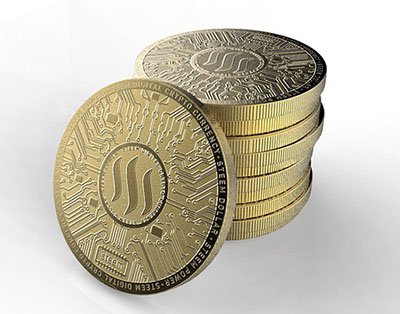We Are All Bankers Here On Steem
If future historians will ever be able to write an accurate description of this era, they may well label it as one of enforced scarcity. Back in the 1970s, Buckminster Fuller calculated that even with the existing technology at the time, the world had enough resources, and resourcefulness, for humans to live in peace and relative prosperity. All that was required was to decentralise the control of energy - all the other control structures would follow.
There is, however, one global structure that seems immune to scarcity as it is also the primary source of our manipulated lack of abundance. This is the network of central banks and their banking brethren. None of us paupers is allowed direct access to central banking's largesse; none of us can then increase the money supply ten-fold through fractional reserve banking. We end up with usurious interest rates at the predatory end of the spectrum. Dog-eat-dog world, they tell us, yet the pigs dine in style.
However, you can play a similar game within Steem.

Let me try and explain a change of perspective regarding STEEM and the Steem blockchain economy. I'm not sure there are any solutions below, but articulating a problem can sometimes bring forth an obvious way forward.
Steem is designed around a Proof of Stake protocol. This means that every holder of STEEM receives some interest on their holding, even for doing nothing, so long as it is vested. On top of this is the ability to earn interest at a level somewhere between author rewards and the value of a full upvote. Forget for the moment about post contents and quality; the blockchain is agnostic to quality, just as the banknote in your wallet doesn't care about what you buy with it. Instead, try to think of the blockchain as if it was a central bank - a decentralised algorithmic bank.
From this point of view, every vested holder of STEEM is only one step away from the blockchain; there are no intermediaries. You can perform a number of transactions that will earn you further coins straight from the blockchain. In this respect, we are all just one step away from the blockchain central bank; we are all bankers, in a relationship not dissimilar to that between a commercial bank and a central bank. The one thing we cannot do is delegate more STEEM than we control; there is (as yet) no fractional reserve delegation.
So, with this change of perspective, what is the point of the whole Steem economic system? If everybody in real life was a banker, who would do anything worthwhile? Well, the banking in itself is worthwhile in the sense of generating money; what is then needed is all the work involved in distributing that money. But before discussing coin distribution, there is another transaction that needs attention: selling STEEM on an external exchange.
Now, the whole function of forex markets is to buy and sell currencies, whether as part of trade or speculation; nothing unusual here. What is of more concern is when companies, including banks, offshore their profits in such a way as to pay minimal taxes in the jurisdiction in which they made those profits. This is really the problem for Steem: that so many coins are generated purely to be out-exchanged as quickly as possible.

There appears to be little flow of coins. Would be interesting if we could ID each coin, like the numbers on each banknote, and track how many transactions take place before a coin ends up at an exchanger's account.
HF20 included a small penalty for powering down; over the full 13-week period, this amounts to one week's loss of income for the stake being divested. It is, for now, a small tax but the concept of penalising some transactions has been accepted.
As I have shown before, the Steem economy is fairly stable and predictable in STEEM terms. It is fairly easy to calculate what one can earn as a percentage of one's staked Steem Power (SP), doing nothing else apart from purely financial transactions. But nobody is going to get rich earning 20% per year on a stake of 20 SP.
Indeed, what would Steem look like if all posts were published as small temporary wallets in which to collect assets that are later bundled into a larger account? Imagine, no content, no communities, just money-making algorithms. It would be like the Cayman Islands of blockchains, generating profits to be spent elsewhere. There is a role there, but not, perhaps, what the founders envisioned.
If coin-flow is a problem on Steem, then what about coin distribution? It is undoubtedly true that a good content creator can earn far more from the content consumers than merely from self-earnings from the blockchain. It is also true that not all banks are created with the same modus operandi; there are cooperative banks, or credit unions, whose aims are to create positive money-flows within their community.
Instead of raging at the inequities of the current distribution of STEEM within the Steem economy, create the equivalent of a coop bank. I know a number of users who use this method of both making money and distributing it to particular causes and communities. They could be called "social bankers". Some people may prefer the term "social entrepreneur", but the entrepreneurs are the devs and community leaders, the backers have diverted their rewards to them from the Steem central bank; I think in this context they are closer to bankers than some may wish.

The creation of coins, of STEEM coins, can be thought of as the macroeconomics of the Steem cryptoeconomy. The distribution and flow of those coins can also be looked at as the microeconomics - those transactions that are performed by individual accounts.
I feel that what we need to look at very carefully is creating microeconomic rules that facilitate the creation of platforms and experiences that promote the original vision of a social media environment. The current set of encoded rules do not, and will not, by themselves, promote the kinds of social interactions people expect. The current drive to create new platforms and new forms of interactions are great, but they are sitting on top of an established macroeconomy that itself needs to be updated in the light of some years worth of experience.
I have just outlined some ways in which to look at the Steem blockchain. There needs to be more data to clarify the notions of coin-flow and the relationship between the macroeconomics of the blockchain and the microeconomics of each user. In such ways, we may be able to pinpoint with more precision those transactions that are damaging to the overall economy and hence find ways to fix them without ruining those parts that appear to work well.
To highlight a concrete, and emotive, example let's take the whole issue of bidbots, self-voting and voting-rings. All of these have been around since I first started on Steemit, some 18 months ago. They are the simple and inevitable consequences of the core algorithm whereby it is profitable to both vote-buyer and vote-seller to exchange a transfer for an upvote. The blockchain is morally neutral on these transactions. Tinkering with the existing parameters will merely shift the equilibrium points and expectations.
The real danger for the blockchain is that inadequate feedback loops will lead towards an unwanted attractor, a system where bad behaviour becomes the norm. This is not the place to digress about how similar this is to the outside world. Many months ago I published a proposal regarding adding feedback to the voting algorithm; at the time it was considered too computationally intensive, and yet I retain the idea that without multiple positive and negative feedback loops any economy is going to be inflexible.

It is, for me, the symmetric nature of the transactions on Steem that leads to financial, banking, transactions being more profitable than non-banking transactions, those that would make the coins flow further around the economy. Adding some asymmetry to the rules needs to be done with careful thought; any asymmetry that can be made symmetric again by having two accounts will not work. I think it needs to be a function whereby a voting-pair would quickly drain their voting power to the point of futility. Bad behaviour, in game theory terms, can never be wholly eradicated, but it can be minimised to the extent that it is not bad for the whole economy. I stress that the term "bad" is used here in the sense of taking the economy closer to some unwanted state.
It can be argued that Steem will be fine as a source of high interest profits for all the banker-members; that the social fabric can be built on top of this financial machine and that social-bankers can help fund this development. My concern here is that an economy that thrives on exporting its own coin while limiting its flow means that the social strata above this will be drawing on a resource, STEEM, whose value seems to be appreciated more as an out-exchange currency than within its own economy. That still takes us back to designing a currency flow-system that gives STEEM more value internally.
And so, let me come full-circle to the title of this article. By being just one step away from the blockchain, we are all in a relationship that is not dissimilar to that between a commercial bank and a central bank. We can all profit from this relationship, and yet if that is all we do then all we have left is a banking system that creates and exports profits. Such behaviour is logical and the current system is drifting in that direction. What the Steem economy needs are corporations (in the broadest sense of the term) that give added value beyond that produced by banking. But for such groups to actually thrive, I think we need to attenuate some of the coin-flow practices currently being normalised. In order to do that, we need to take a long hard look at Steem's economic code - and fix what needs fixing.
If you have an interest or expertise in fields related to cryptoeconomics, and Steem in particular, then would be good to talk; you can find me in the economics room in the SOS Discord server set up by @pennsif.
images: pixabay; logos my designs
 - -
- -  - -
- -Please Comment, Resteem and Upvote. Thanks!
@rycharde manages the AAKOM project and the MAP Rewarder and Trail.
This post is gold because it presents a great way to think about things. I love that the article talks about coin-flow. Yes, we are all bankers to a degree. The central bankers are our elected witnesses.
For me, the value of a currency is how it denotes value exchanges within a community. In any functioning economy, value exchanges are not zero-sum, each side should be getting greater "value" from the exchange than they are giving. So, internal coin flow, coin churn, whatever we call it should be a sign of a functioning economy. Coin-flow in/out of the currency is a way to measure the overall health of the economy and exchange price to BTC or USD is a reasonable proxy for that - mostly.
I think we reach similar conclusions, that what steem the community really needs is more opportunity for value exchanges denoted in steem. Incidentally, the above reasoning on value exchange is why I think that there is not a good case for many altcoins or SMTs because they have no plans to bootstrap a functioning economy.
The altcoin sits in a weird place where it tries to act as both a denoter of value exchanges and a method for funding a project. That's a weird place to be at unless you either have the power of a government regarding the altcoin and its issuance. Most altcoins have fixed issuance, but approximate government -like power with a large founder/premine.
I'm rambling. In my defense, that article was thought provoking.
Final rough thought: As internal value extraction exceeds internal value exchange then the coin collapses into a ponzi. SP slows this for steem and arguably we have some basic value exchange. But agreed we need a much richer palette if steem is to do well.
Probably number a biggie is having reasons for external parties to come and burn some steem, or at least lock steem up for a significant amount of time (SP).
Thanks! let me comment on just one thing, for now: I see the blockchain economic algorithms as the central bank, but perhaps the user-as-banker can be pushed further in that it is the collective votes for witnesses that can allow that economic code to be changed.
However, so as not to make the economic system worse, would be really useful to have a steem economic committee - SEC (jokin!) - that can advise and propose suitable changes. There are some tweaks that have not yet been tried, but I'll leave it at that for now.
Yes. I prefer your interpretation; algorithm as central bank. Witnesses as central bank governors then?
Though, the wrinkle for Steem is that a large amount of tokens are held in just a few sccounts. Amounts that grant the holders de facto central bank powers because the can increase the coin supply.
Posted using Partiko Android
In theory, the governors are the whole collective of stake-holders. In practice, it is weighted towards the large accounts. With the current large shifts in public stakes, it is worth discussing the roles of the accounts of the exchanges.
This is such an interesting, thoughtful and important essay, the kind that would have attracted a lot of attention not so long ago. I hope it gets read and shared highly.
Thanks :-)
I hope more people grasp the difference between effects and causes - one cannot blame the flag for fluttering.
This is a great post, very insightful. I agree and think that steemit is probably one of the most valuable technological development of this decade, if not this century. I can only attempt to convey my agreement with you, and feel like the best is yet to come!
Posted using Partiko Android
Thanks, let's help make it so!
Highly rEsteemed!
Thanks! I think Bucky is an important precursor to the current decentralisation ideas. I suspect he was deeply frustrated; read the Grunch of Giants.
:-)
This post has been included in the latest edition of SOS Daily News - a digest of all you need to know about the State of Steem.
Editor of the The State of Steem SoS Daily News.
Promoter of The State of Steem SoS Weekly Forums.
Editor of the weekly listing of steem radio shows, podcasts & social broadcasts.
Founder of the A Dollar A Day charitable giving project.
$rewarding 100
Just saw this - thanks a lot!
Am sending you 20 TULIPS :-)
The reward of this comment goes 100 % to the author rycharde. This is done by setting the beneficiaries of this comment to 100 %.
To listen to the audio version of this article click on the play image.

Brought to you by @tts. If you find it useful please consider upvoting this reply.
It would be nice if people could buy and sell and pay for real products and services with Steem much more than they can today. Then they would not need to exchange Steem into fiat at all. A true Steem economy...
Posted using Partiko Android
Congratulations @rycharde! You have completed the following achievement on the Steem blockchain and have been rewarded with new badge(s) :
Click here to view your Board
If you no longer want to receive notifications, reply to this comment with the word
STOPWhen are you going to write? Just waiting for ya!
Posted using Partiko Android